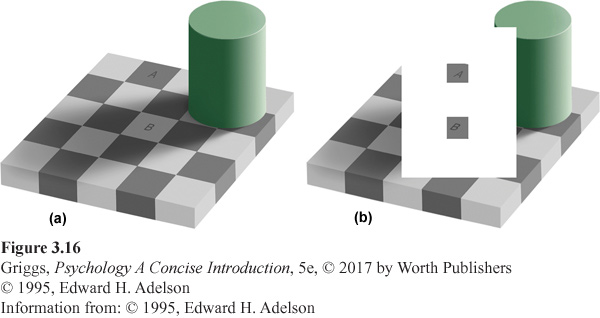
Figure 3.16 | Adelson’s Checker Shadow Illusion | (a) Which checker square is brighter— Square A or Square B? It certainly appears that Square B is brighter. However, the two squares are the same shade of gray. Whereas there are other factors involved in this brightness illusion, an important one is that the two squares have different surrounding contexts. Square A appears darker because it is surrounded by lighter squares, and Square B appears lighter because it is surrounded by darker squares. The message: Perceived brightness is relative. (b) The two squares are now surrounded by the same context, allowing you to see that they are indeed the same shade of gray.
© 1995, Edward H. Adelson
Information from: © 1995, Edward H. Adelson
[Leave] [Close]